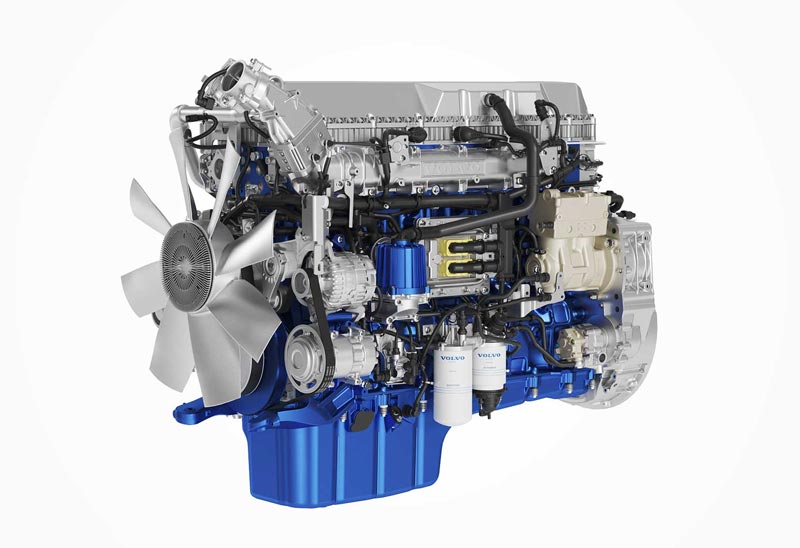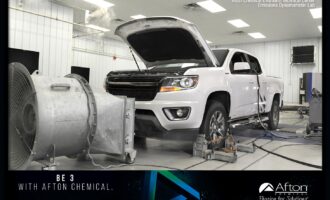
After 20 years, single technology matrix proves its usefulness
The American Petroleum Institute (API) recently published the 21st edition of API 1509, which describes the API Engine Oil Licensing and Certification System (EOLCS) and explains to marketers how different API marks are licensed and displayed for the consumer.
The most significant change in the latest edition is Annex P, which describes the use of a single technology matrix or STM. STM is a detailed virtual testing process and protocol utilising test data, characteristics and features of base oils and blends, and statistical methods and analysis to predict the performance of a specific additive technology in a specific base oil. Currently only the Sequence IIIH engine test can use STM. API first published its guidelines for the use of a single technology matrix in the 16th edition of API 1509 in April 2007 as Annex R, which still exists today as Annex O, for the IIIF, IIIF-HD, IIIG and IIIGA Sequence tests.
STM and virtual testing are concepts and processes first introduced by Lubrizol in 2001-2002 as an enhancement to API base oil interchange (BOI) and viscosity grade read across (VGRA) guidelines. Phil Scinto1,2 and later with Margaret Lemmon3 demonstrated through theory, simulation and case study analysis that the statistical modelling of historical test data may improve the efficiency and accuracy of future oil capability assessment. Scinto is a senior fellow at Lubrizol and Lemmon has since retired from Lubrizol.
But STM was a complex process which was not generally understood except by statisticians analysing large blocks of data. The acceptance of STM into API 1509 made it easier and less expensive for additive companies to approve their additive packages. Initially, Lubrizol was the only one who practised STM because they understood the method. Over time, the other additive companies, including Afton Chemical, Chevron Oronite and Infineum, started practising STM for their additive packages. As organizations developed experience with STM and encountered scenarios not clearly defined by Annex R, it was evident that updated and enhanced guidelines would be necessary for future engine tests. These enhancements led API to develop Annex P.
STM is useful for approving an additive package across a range of base oils. It simplifies the requirements of additive companies by reducing the number of tests required when qualifying a new additive technology. For lubricants marketers, STM offers certified engine oil formulations across a variety of base stocks, giving the oil marketer flexibility to formulate their engine oil offering. This is especially important during these times when supply chain issues have become a huge challenge for everyone in the industry.
STM is not easy to develop, however. It still requires a significant amount of testing and robust technology. Larger oil marketers who require several different base stocks may opt to use a single technology matrix once they have acquired sufficient data to allow them to determine the outcome of new base oils through predictive modelling. This usually comprises at least six and sometimes seven different base oils. STM gives a prescription of what needs to be done and how it needs to be reported.
While STM is a statistically sound way to establish BOI for a specific technology, it is not a BOI per se. API’s BOI ‘read-across’ guidelines for base stocks were developed to ensure that the performance of engine oil products is not adversely affected when different base oils are used interchangeably by engine oil blenders. BOI guidelines are available to anyone to use, even if the formulator was not part of the original data source for that proof of performance. This enables quick and efficient product development. Conversely, STM only works for the company that does the engine tests because they are creating the data to use with a single technology.

In the development of engine oil there is one test which must be repeated, the Sequence III test. The Sequence III high-temperature oxidation engine test measures lubricant thickening and piston deposits under high-temperature conditions. The test was run on every additive package and most base stocks and viscosity grade read across because it does not have a wide range of base oil interchange.
The Sequence III is currently the only engine test using STM. STMs have been used within the industry for about 20 years with the Sequence III and the industry views them as a valuable tool, says the Afton Chemical Engine Oil STM Team. Afton Chemical chaired the STM Work Group that brought Annex P forward to the API Lubricants Standards Group.
Annex R, the original STM guideline, was written nearly 20 years ago and single technology matrices have been approved for the Sequences IIIF and IIIG engine tests. In April 2018, the STM Work Group’s attention turned to the Sequence IIIH test as ILSAC GF-6 development became a priority. Nearly all API members wanted to see the STM approach extended to the Sequence IIIH test, according to the Afton Chemical Engine Oil STM Team.
API’s BOI/VGRA Task Force decided to undertake a thorough review of Annex R, including its history and interpretation, current practice, base oil properties of interest, the minimum number of tests, statistical examples and clarifying language. There were differing interpretations of Annex R and confusion around how STM was supposed to be run, says John Loop, technology manager for Lubrizol, who represented Lubrizol in the meetings on the Sequence IIIH.
Ultimately, the STM Working Group decided to completely rewrite Annex R from the ground up for current/future engine tests to make it more prescriptive and ensure everyone was following the same process. This is the new Annex P. The original Annex R was preserved as Annex O.
Loop, who has been with Lubrizol for over 20 years, is a strong advocate for the use of STM. The Sequence III usually costs between USD60,000 and 70,000 per engine test and using STM could save up to a quarter of a million dollars, Loop says. Though, he notes it is not run for all technologies as not all are approved for six to seven base stocks. STM can be beneficial for a technology designed for broad application but may not be helpful for technology with limited base oil coverage or for customer-specific technology.
The Afton Chemical Engine Oil STM Team emphasises that there was broad industry support throughout the industry for extending the STM guidelines to include Sequence IIIH. Annex P was developed for the Sequence IIIH test with the final ballot being approved in November 2021. While additive companies are generally the STM developers, there are benefits for stakeholders throughout the lubricant industry and consumers, says Afton. Oil marketers can gain base stock flexibility, especially important with the current supply chain issues. Consumers also benefit from high-quality and cost-effective lubricants.
Annex P was written to be clear about the general STM approach and the engine test specific requirements, says Laura Birnbaumer, automotive engine oil, product adaptation and qualification program manager at Chevron Oronite Company LLC. Some of the key changes include the addition of numerous new definitions to enhance clarity. For example, the testing period date range was introduced to encompass all data of the single technology within this period for the purposes of data analysis and prediction model building. Additional ways to check spread requirements on the base oil properties of interest were also introduced. The STM model data set now includes the listing of failing data which will be available to oil marketers. Finally, the prediction model cannot be used to predict a pass when an actual engine test fails within the defined range of the model data set.
A reduction in the volume of engine tests, lower costs, and the ability to expedite approvals of oils seem like worthy reasons for the continuing development of STMs. However, despite the consensus on including Sequence IIIH, not everyone is convinced of the merits of STM.
OEMs historically have not been supportive of STM. OEMs want to see engine test data and proof of performance and range, says Loop. STM requires trust that another party has developed the model properly and it has accurate data. This requires a leap of faith from OEMs who are conditioned to running engine tests as the absolute determinant if an oil passes or fails.
However, during the final Annex P ballot, many OEMs expressed support for statistical methodologies, such as STM, says Afton Chemical, noting that there are instances where OEMs have adopted a similar practice for their internal specifications.
Loop suggests it can be a balancing act between running and not running engine tests. But of STM, he says, “It works. It was a smart idea and can save time and money.” The challenge is to get everyone on the same page. In an industry where the time taken to develop engine testing can be a severe handbrake, and with broad support and significant cost savings, the obvious question is whether there are opportunities to extend this statistical approach to other engine tests.
No discussions are currently underway on extending the concept of STM, says Afton Chemical. However, there may be opportunities to extend its application to other test types, the additive company says.
Volvo Group has previously requested additive companies run additional Volvo T-13 oxidation tests to provide more confidence in different base stocks. While not specifically an STM, it was “STM-like,” Loop says. The Volvo T-13 engine test was a newly developed test for the API CK and FA-4 heavy-duty engine oil categories. The test aims to mimic and prevent oil oxidation and viscosity increase.
The Lubrizol representative believes there may be an opportunity to extend STM to the Volvo T-13 engine test. There is potential to save time and money if they decide to bring the Volvo T-13 engine test into the Annex P STM, he says.
The Mack EOS-4.5 and Volvo VDS-4.5 HDEO specifications do not follow API’s base oil interchange rules for the Volvo T-13 oxidation test. While API allows full Group II base oil interchange in the Volvo T-13 oxidation test, meaning any Group II base oil can be used with an additive technology that has demonstrated passing results in the test, Mack and Volvo, which owns Mack, instituted a new rule effective in 2019 that permits Group II interchange if the base oil saturates, sulphur and viscosity index of an oil fall within an established range. In order to establish a range, a minimum of four passing Volvo T-13 tests must be achieved in a given additive technology. The highest and lowest saturates, sulphur and VI values from the testing will then be used to establish a base oil interchange range for those parameters.
While the Sequence III tests can cost between USD60,000 and 70,000 per run, the Volvo T-13 is a much longer and more expensive test. It employs a 2010 Volvo D13 or Mack MP8 engine platform and runs for 360 hours at an elevated sump temperature of 130 degrees Celsius. The cost of the test is around USD170,000. Loop suggests potential cost savings could be more than half a million dollars.
Following the updates to Annex P, we are in a better place than we were before, says Loop, as some of the uncertainty in the process was fixed on the rewrite.
1 Scinto, P.R., “The VirtualEngine Test,” SAE paper No. 2001-01-1905, May 2001.
2 Scinto, P.R., “Use of Virtual Tests in Establishing BOI/VGRA,” SAE paper No. 2002-01-2675, October 2002.
3 Scinto, P.R., and Lemmon, M.A., “The Single Technology Matrix Process for Base Oil Interchange,” SAE paper No. 2002-01-2676, October 2002.








